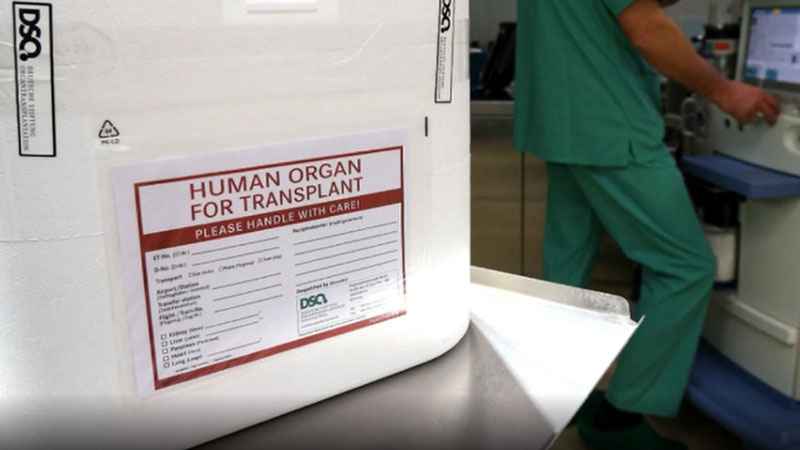Researchers at U of M working to create world’s 1st human organ storage bank
[anvplayer video=”5026671″ station=”998122″]
Researchers at the University of Minnesota are working to create the world’s first human organ storage bank as part of a new national effort.
Currently, human organs only have a matter of hours after donation to reach a recipient, so storing them is not possible.
But the Minnesota scientists are developing new methods of organ preservation that could give organs a shelf life of months or even years.
"We want to stop biologic time," explained Dr. Erik Finger, a transplant surgeon and associate professor in the university’s department of surgery. "Right now, there’s a problem: if an organ is suitable for a patient in California but comes from Maine, it may not get there in time. With heart and lung, for example, you only have four to six hours. Our process would allow you to store organs in a liquid nitrogen freezer for years, theoretically."
"There have just been some really compelling breakthroughs," said John Bischof, the lead researcher on this project and director of the university’s Institute for Engineering in Medicine.

[KSTP]
Bischof has been working on advancements in organ preservation for more than a decade.
5 EYEWITNESS News was able to visit the lab where his team is cryopreserving rat hearts using liquid nitrogen and cryogenic freezers at ultra-low temperatures.
"What we do is ‘cool’ and that’s no pun intended, right?" Bischof said. "We’re working on low subzero approaches at Minnesota that could give you, essentially, indefinite banking."
Bischof said rewarming the organs so they are able to function again has been a big challenge, but his team has developed new methods and technologies that are showing promise in the rat organs they have tested in the lab.
"It’s a fantastic moment for us," Bischof said. "We add nanoparticles in and profuse them, along with biological antifreeze molecules. Then we use an external radiofrequency to rewarm the organ entirely from within."
Bischof said they plan to start testing the system on donated human organs that are not able to be transplanted later this summer.
"This would not have been possible even a few years ago, so to think how radically different we can envision a world where there is an opportunity for every patient who needs a transplant to be able to find an organ, that’s what’s groundbreaking," said Susan Gunderson, CEO of LifeSource, the organ procurement organization serving Minnesota, South Dakota, North Dakota and Western Wisconsin.
The University of Minnesota is now one of two research centers in the world aimed at creating human organ banks through cryogenic storage of organs.
The national effort through the Biostasis Research Institute launched and funded the Organ and Tissue Preservation Center at the University of Minnesota, alongside a sister research center at Massachusetts General Hospital. The program has grown from a few research projects to a $100 million effort.
"The goal is to eventually create a bank where we have vitrified organs on the shelf that we can just take down after a year or ten years of storage and find the ideal recipient and rewarm them," Bischof said.
Finger added, "If you were to have a bank of organs, it would change a lot of what we do. It would allow you to better match donor and recipient, so you could have a better outcome in the long run."
Bischof believes they will be able to start scaling up to the goal of an organ bank in the next five to ten years, beginning with transplantable pieces of organs before moving up to whole organs.
"I think we are probably many years away from that still because there’s so much that needs to be done in terms of validation, testing and safety, but it’s very hopeful that we are on the right track," Bischof said. "But I do think we’re going to have pieces of organs, if not whole organs, in five to ten years."
LifeSource said these developments could be a ‘game-changer’ in saving lives. More than 3,000 Minnesotans are currently waiting for an organ transplant.
"It would be a tremendous game-changer, not only in the time itself, but also being able to find that perfect match, the best organ for that particular patient," Gunderson said. "For children in particular, we are really challenged with finding the right size match organ at the time a particular patient needs it. That’s devastating. I think this brings comfort to those patients who are waiting for a transplant today knowing that the science continues to develop. It’s a promise of hope."